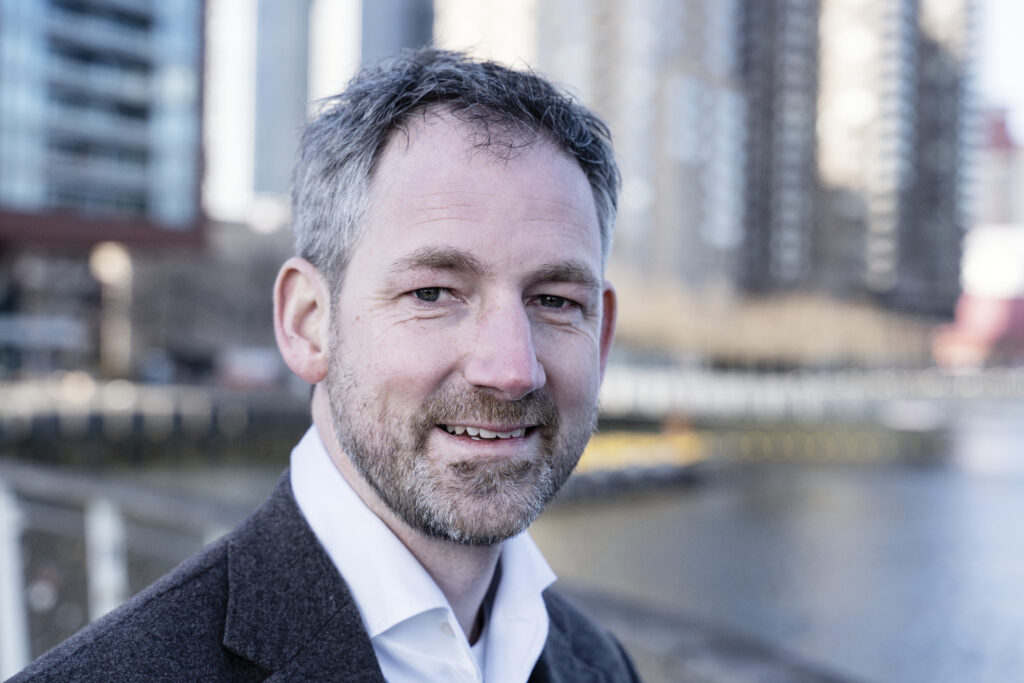‘If you want to bring about system change, it is important to work together as a sector.’
Engineering consultancy Sweco joined EcoShape in January 2021. We interviewed Alex Hekman, Business Director Water at Sweco, about Building with Nature in their current assignments, sustainable change in the market, and the added value of a partnership.

What is your main reason for becoming an EcoShape partner?
‘We are already working on Building with Nature in many places. We come across many EcoShape partners in the field and we work with them a lot. A lot is happening within EcoShape that we can learn from. It would be strange not to participate in that.’
‘We want to enrich EcoShape and learn from EcoShape. It is crucial nowadays to work in these kinds of partnerships. Of course, we have our own innovations. If you keep to yourself, you can also generate exposure. But if you want to bring about change, it is important to work together as a sector.’
Are you currently encountering a lot of Building with Nature in your work?
‘We are already involved in many BwN projects in The Netherlands, such as the Kleirijperij and Brede Groene Dijk, the fish migration river Afsluitdijk, foreshores at the Frisian IJsselmeer coast, Oostvaardersoevers and the beaches around the Markermeer.’
What is your experience with Building with Nature?
‘We are the driving force behind the ‘Proeftuin Grote Wateren’. It is a field lab in which we experiment with solutions for inland lakes to benefit water quality, flood safety, and ecology. There we launched a new concept: Slow Building. This allows you to carry out dredging and earthmoving activities with sustainable energy. To do this, we test systems that require little energy. Another example is the Zandwindmolen or SandWindmill for coastal nourishment. Instead of discontinuously dumping sand with hopper dredgers, a SandWindmill continuously nourishes the coast with sand via a pump and connected sand pipeline, but more slowly. To make a comparison: You can mow an entire lawn within an hour with a lawnmower that runs on petrol. Or you can do this with a smaller, much slower robotic lawnmower that mows almost continuously and recharges itself on sustainable energy during the job. This uses much less power so that locally generated wind or solar energy can be used, and ultimately delivers the same result. Sometimes speed is necessary, but if you can spread the work out over a longer time, it’s a great, sustainable alternative.’
‘In the Proeftuin Grote Wateren, we are now also investigating CO2 emissions of dredged material. A consortium of EcoShape parties will install equipment on the new Marker Wadden islands that are currently under construction to measure these CO2 emissions. These emissions can be substantial compared to the emissions of the equipment. So it is relevant to investigate this and look for solutions.’
What are your expectations regarding the EcoShape partnership?
‘You can do a lot of things alone. But the transition to scaling-up Building with Nature is a system transition. You have to do that with more parties. We see that Nature-Based Solutions are already an important topic. And it will become even more important. We have depleted the soil and water system in many places. We need to work more with the natural system as a starting point. Renewed awareness needs to grow in the sector and among our customers. EcoShape must become the country-wide platform for bundling knowledge, disseminating it, and developing new initiatives. We want to contribute to that.’
